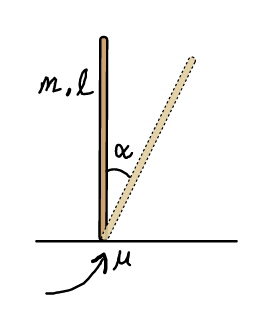
Question and Answers Forum
AllQuestion and Answers: Page 1804





Pg 1799 Pg 1800 Pg 1801 Pg 1802 Pg 1803 Pg 1804 Pg 1805 Pg 1806 Pg 1807 Pg 1808
|
Question and Answers Forum |
AllQuestion and Answers: Page 1804 |
| The distance between point P(lat 65°S, long 25°E) and Q(lat 65°S, long X) on the earth surface along the parallel of latitute is 2502.5 km. If π = ((22)/2) and earth radius is 6370 km, find the two possible values of x. |
| sin^(−1) ((ax)/c)+sin^(−1) ((bx)/c)=sin^(−1) x [When a^2 +b^2 =c^2 ] |
| A cyclist goes round a circular track of radius 70m.The total mass of bicycle and rider is 70kg.Calculate the frictional force which will ensure that the rider successfully negotiates the track with a speed of 25m/s.What happens to the rider if μ=0.3? |

|
| A block of ice slides down a 45° incline plane in twice the time it takes to slide down a 45° frictionless incline plane.What is the coefficient of kinetic friction between the ice block and the incline plqne. |
| Any Architect in the house? please i need your help |
| Compare the bond strength of S − O bond in SO_3 ^(−2) and SO_4 ^(−2) ion. |
| Simplify (((log_2 (√5) . log_(25) 20) + log_4 (√(50)) )/(log_4 70 − log_(15) 49)) |
| f(x) = sin(sin^2 x) + cos(sin^2 x) then the range of f(x) is |

|
| A hemispherical bowl of radius R = 0.1 m is rotating about its own axis (which is vertical) with an angular velocity ω. A particle of mass 10^(−2) kg on the frictionless inner surface of the bowl is also rotating with the same ω. The particle is at a height h from the bottom of the bowl. It is desired to measure g (acceleration due to gravity) using the set up by measuring h accurately. Assuming that R and ω are known precisely and that the least count in the measurement of h is 10^(−4) m, what is the minimum possible error Δg in the measured value of g? |
| Compounds with high heat of formation are less stable because (1) it is difficult to synthesize them (2) energy rich state leads to instability (3) high temperature is required to synthesize them (4) molecules of such compounds are distorted |
| A one kg ball rolling on a smooth horizontal surface at 20 m s^(−1) comes to the bottom of an inclined plane making an angle of 30° with the horizontal. Calculate K.E. of the ball when it is at the bottom of incline. How far up the incline will the ball roll? Neglect friction. |

|
| z^(−4_(=1/3(1−(√(3i)))) ) |
| Prove that Σ_(r=1) ^(2n−1) (−1)^(r−1) ∙(r/(^(2n) C_r )) = (n/(n + 1)) . |
| Which of the following relation is/are correct? (1) ΔG = ΔH − TΔS (2) ΔG = ΔH + T[((δ(ΔG))/(δT))]_P (3) ΔG = ΔH + TΔS (4) ΔG = ΔH + ΔnRT |

|
| ∫((sinx−2cosx)/(1+2sin2x))dx solves |
| Prove that n and 2n−1 are coprime. |
| ∫_0 ^(90) ((sin^2 x)/(sin^4 x+cos^4 x))dx |
| find the nth term of the sequence 4, 9, 16, 45, 76 please help |
| When the gas is ideal and process is isothermal, then (1) P_1 V_1 = P_2 V_2 (2) ΔU = 0 (3) ΔW = 0 (4) ΔH_1 = ΔH_2 |
| In a school of 500 students,150 played hockey 250 played football,120 played table tennis and 100 played one of the three games.If 50 played both hockey and football,how many played table tennis only?pls show workings with diagram |

|
| Find^n C_1 − (1/2)^n C_2 + (1/3)^n C_3 − .... + (−1)^(n−1) (1/n) ∙^n C_n . |
Pg 1799 Pg 1800 Pg 1801 Pg 1802 Pg 1803 Pg 1804 Pg 1805 Pg 1806 Pg 1807 Pg 1808 |